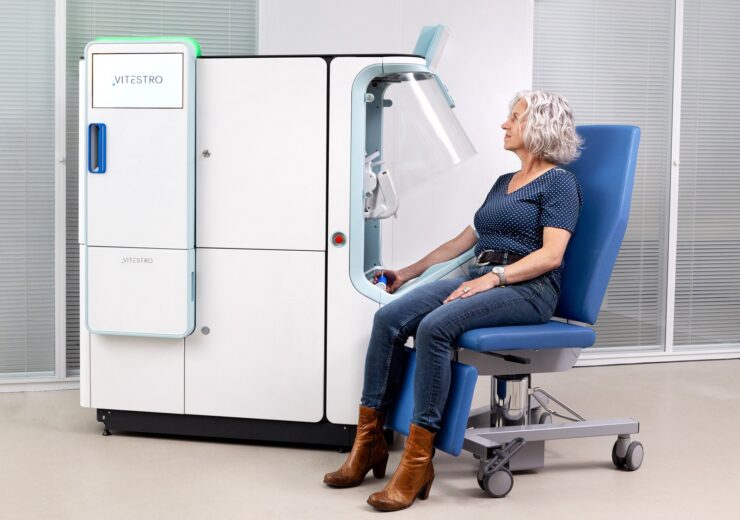The company claims that its new autonomous phlebotomy device will enable almost complete automation of the pre-analytical phase and standardises the handling of blood sample during the blood collection

A new patient experience in blood drawing. (Credit: PRNewswire/ Vitestro)
Dutch medical robotics company Vitestro has unveiled an advanced autonomous blood drawing device that leverages artificial intelligence (AI), ultrasound imaging and robotics.
The device combines AI-based, ultrasound-guided 3D reconstruction with robotic needle insertion to ensure accurate and secure blood collection.
It leverages venepuncture technology, which can be used in patients aged 16 years and above, and those with comorbidities, and puncture difficulty.
Vitestro is expected to commence the clinical trial for regulatory approval in Europe, in 2023 and is expected to commercialise the product in the EU market in 2024.
Vitestro co-founder and chief executive officer Toon Overbeeke said: “We have spent nearly five years on the development of this breakthrough medical device. All relevant disciplines are represented in our dedicated, specialised team of 35 people.
“To prepare for production and commercialisation, the team will double in size in the next two years.
“We have clear momentum in the market and will be the first to bring autonomous technology to European hospitals. With our technology, we can help to build a more robust and resilient healthcare system.”
According to the company, blood collection (phlebotomy) is the most common invasive medical procedure and plays an important role in clinical diagnostics.
The automation of the labour-intensive procedure is said to help transform the quality of care and create a sustainable healthcare system.
Vitestro claimed that its laboratory automation technology will standardise the handling of blood sample while the blood is being collected.
Its device enables almost complete automation of the pre-analytical phase and is capable of lowering the rates of high blood test error, primarily caused by manual variability.
Vitestro has already used the device to perform 1,500 automated blood draws in more than 1,000 patients, in the clinical studies of its prototype.
The company intends to initially install the device in outpatient phlebotomy departments, where patients can select between Vitestro’s venepuncture device or the standard method.
